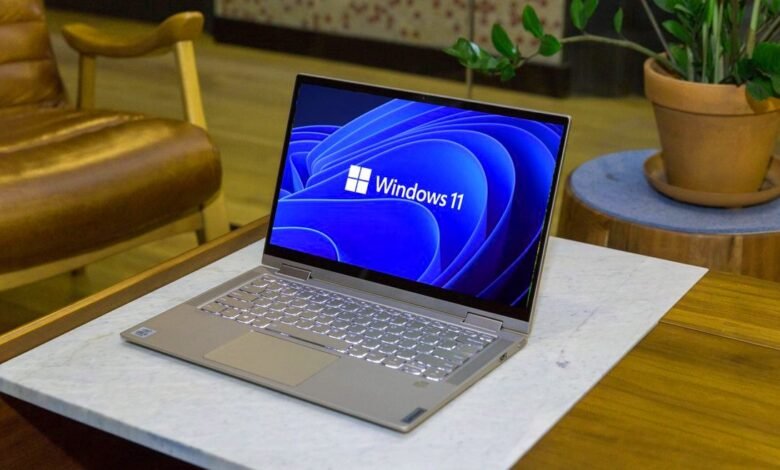
In today’s digital age, touchpads have become an essential component of laptops and other portable devices. They provide a convenient and intuitive way to interact with your computer, allowing you to navigate, click, scroll, and perform various gestures effortlessly. However, not everyone is satisfied with the default settings of their touchpad. If you’re looking to enhance your touchpad experience and customize its functionality, this article is for you. Here, we will guide you through the process of modifying the Windows touchpad to suit your preferences.
Your touchpad’s default settings may not always align with your preferences or requirements. Customizing your touchpad allows you to optimize its behavior and improve your overall productivity and comfort while using your Windows device. By modifying various touchpad settings, you can fine-tune its responsiveness, enable useful gestures, adjust scrolling behavior, and more.
Read more: How to launch Windows in Safe Mode
Accessing the Touchpad Settings
To begin customizing your touchpad, you need to access the touchpad settings on your Windows device. Follow these steps:
- Click on the “Start” button located in the bottom left corner of your screen.
- Select “Settings” from the Start menu.
- In the Settings window, click on the “Devices” option.
- Choose “Touchpad” from the left sidebar to access the touchpad settings.
Adjusting the Pointer Speed and Sensitivity
One of the essential aspects of touchpad customization is adjusting the pointer speed and sensitivity. This allows you to control the cursor movement according to your preference. Follow these steps:
- In the touchpad settings window, locate the “Pointer Speed” or “Cursor Speed” option.
- Adjust the slider to increase or decrease the pointer speed.
- Fine-tune the sensitivity settings to ensure the touchpad responds accurately to your touch.
Enabling and Customizing Windows Touchpad Gestures
Windows provides a range of touchpad gestures that can enhance your navigation and multitasking experience. Follow these steps to enable and customize touchpad gestures:
- In the touchpad settings window, look for the “Gestures” or “Advanced Gestures” section.
- Enable the desired gestures such as three-finger swipe, pinch-to-zoom, or rotating gestures.
- Customize the sensitivity and behavior of each gesture according to your preferences.
Configuring Two-Finger Scrolling
Two-finger scrolling allows you to scroll through documents, web pages, and other content smoothly. Here’s how to configure two-finger scrolling:
- In the touchpad settings window, locate the “Scrolling” or “Multi-Finger Gestures” section.
- Enable two-finger scrolling.
- Adjust the scrolling speed and direction to your liking.
Disabling or Enabling Tapping and Clicking
You may prefer tapping on the touchpad instead of using physical buttons for clicking. Here’s how you can disable or enable tapping and clicking:
- In the touchpad settings window, find the “Tapping” or “Clicking” section.
- Enable or disable tapping and clicking as per your preference.
- Customize additional settings like tap sensitivity or click pressure if available.
Modifying Additional Windows Touchpad Settings
Windows provides various additional touchpad settings that can further enhance your experience. Some of these settings include palm rejection, edge swipes, and touchpad wake-up functionality. Explore the touchpad settings window to find and modify these options according to your needs.
Updating Windows Touchpad Drivers
Outdated touchpad drivers can sometimes cause issues or limit the available customization options. To ensure your touchpad functions optimally, consider updating the touchpad drivers. Follow these steps:
- Visit the manufacturer’s website of your Windows device.
- Navigate to the support or drivers section.
- Download and install the latest touchpad drivers specific to your device model.
Step 8: Troubleshooting Common Touchpad Issues
If you encounter any problems with your touchpad, there are several troubleshooting steps you can take. Here are some common touchpad issues and their potential solutions:
- Touchpad not responding: Restart your device and check if the touchpad starts working again. If not, ensure the touchpad is not disabled in the device settings.
- Cursor moving erratically: Clean the touchpad surface and ensure there are no physical obstructions. Adjust the pointer speed and sensitivity settings.
- Unwanted gestures triggering: Customize the gesture settings to avoid accidental triggering of gestures.
- Touchpad lag or delay: Update the touchpad drivers and adjust the touchpad sensitivity settings.
Read more: How to Stop Windows 11 from Always Stalling
Conclusion
In conclusion, modifying the Windows touchpad allows you to tailor its behavior to your preferences, enhancing your overall user experience. By following the steps outlined in this article, you can customize various aspects of your touchpad, from pointer speed and gestures to scrolling and tapping preferences. Remember to update drivers, troubleshoot issues, and enjoy more personalized and efficient touchpad usage.
Customizing your Windows touchpad can greatly improve your user experience and productivity. By adjusting settings such as pointer speed, gestures, scrolling behavior, and tapping preferences, you can tailor the touchpad to your liking. Remember to periodically update your touchpad drivers and troubleshoot any issues that may arise. Enjoy a smoother and more personalized touchpad experience with these modifications.
FAQs
Can I customize the touchpad settings on any Windows device?
Yes, you can customize touchpad settings on most Windows laptops and devices. However, the available options may vary depending on the touchpad hardware and the version of the Windows Touchpad you are using.
Will modifying touchpad settings affect the performance of other input devices?
No, modifying touchpad settings will only affect the behavior and settings specific to the touchpad. It will not impact the performance or settings of other input devices connected to your Windows device.
Can I revert the changes if I’m not satisfied with the modifications?
Yes, you can always revert the changes made to the touchpad settings by returning to the touchpad settings window and restoring the default settings or adjusting them to your liking.
Do I need administrative rights to modify touchpad settings?
In most cases, you will need administrative rights to modify touchpad settings as they are system-level settings. If you are using a personal device, you should have the necessary permissions. However, if you are using a device provided by your organization or institution, you may need to contact the system administrator for assistance.
Are there any third-party software or tools available for touchpad customization?
While Windows provides comprehensive touchpad settings, there are also third-party software and tools available that offer additional customization options. However, it’s recommended to exercise caution when installing third-party software and ensure they come from trusted sources.











